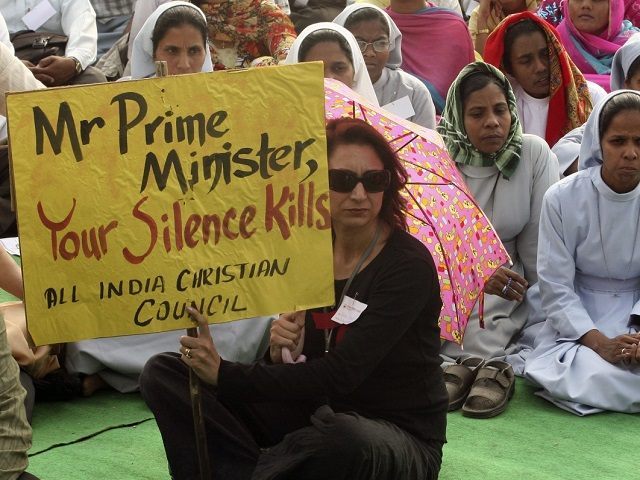In the space of just five days, from May 10 to 15, 2015, Hindu Fundamentalist groups have carried out five separate attacks against Christians in their places of worship in the central Indian state of Madhya Pradesh, which is under the authority of the ruling Hindu nationalist Bharatiya Janata Party (BJP).
According to Sajan George, head of the “Global Council of Indian Christians” (GCIC), the attacks occurred without any provocation or apparent motive, if not “hatred of helpless Christians” and “the intent to terrorize.”
On Sunday, May 10, Pastor Emmanuel Ronald Sinclair was stopped, questioned, and beaten.
Later in the week, a hostel for mentally disabled children run by Augustinian nuns was attacked by unknown criminals in the village of Pipaldhar. Among other things, the marauders threw heavy bricks on the roof of the building, which broke through, falling into the inhabited rooms below yet missing those who were sleeping there.
George condemned the assault, calling it “an attack not only on the sisters but also on disabled children, which aggravates the severity of the act.” George also said that the attack was “an affront against society itself, to which the religious offer a tireless and generous service through the care of needy children.”
That same night, suspected Hindu radicals also attacked three churches in Indore, Madhya Pradesh’s largest city.
In one of the vandalized churches, the Anglican church of St. Paul, militants destroyed the crucifix and holy vessels as well as the church microphone, according to reports by the pastor, Fr. Ramesh Chandekar.
In the second church, extremists threw stones, destroyed crosses, vandalized the property and attempted to set fire to the church by throwing lit rags inside, but witnesses alerted the police who arrived in time to put out the fire before it could do serious damage.
In the third churches, assailants hurled stones at stained glass panels and windows, shattering them.
These attacks occurred just hours before Sonia Gandhi, president of the Indian Congress, inaugurated an orphanage run by Christian missionaries.
According to preliminary investigations, the group responsible for the violence was the radical Hindu group known as “Sanskritik Jagran Manch,” which had threatened to take “direct action” if Gandhi were to open the facility.
According to George, the attacks on churches “reflect the downward spiral of religious freedom in the tiny Christian community in Madhya Pradesh brought about by the nationalist BJP.”
Earlier this month, Indian officials had expressed indignation over the 2015 report of the US Commission on International Religious Freedom (USCIRF), which placed India on the “Tier 2” list of countries, where religious freedom violations “engaged in or tolerated by the government” are serious and are “characterized by at least one of the elements of the ‘systematic, ongoing, and egregious’ standard.”
According to the Commission, incidents of religiously-motivated violence “have increased for three consecutive years” and Christian communities across denominations “report an increase of harassment and violence in the last year, including physical violence, arson, desecration of churches and Bibles, and disruption of religious services.”
Members of the Indian government strenuously disagreed, saying the report reflected ignorance of India and its culture.
“The report is nothing but a conspiracy to tarnish the image of the country,” said Minister of State for Minority Affairs Mukhtar Abbas Naqvi. “For the first time a government has worked to build confidence among minorities and give them social and financial security by empowering them, instead of politically exploiting them.”
“The ground reality is that minorities are not just safer but happier now,” he said.
Follow Thomas D. Williams on Twitter @tdwilliamsrome

COMMENTS
Please let us know if you're having issues with commenting.